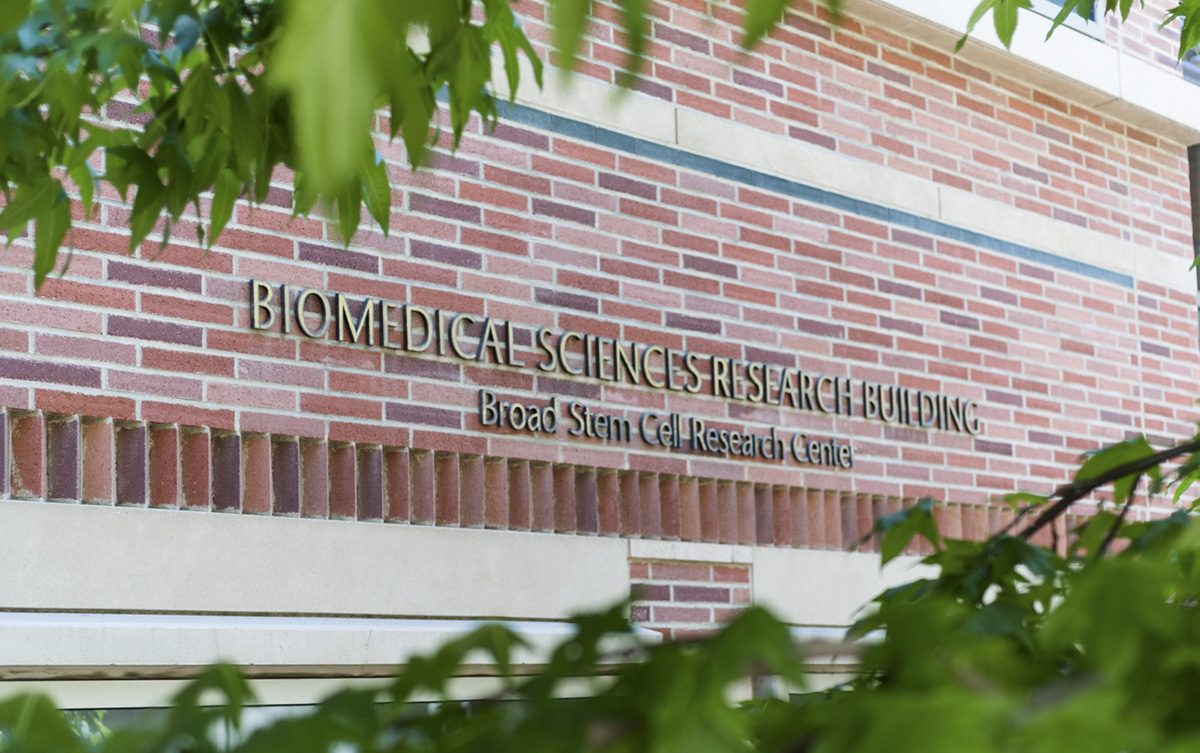Proposition 14 would borrow up to $5.5B in bonds to fund stem cell research

Proposition 14 is a ballot measure that, if passed, would assign money through the sale of state bonds for stem cell research. Stem cell research is used to develop regenerative medicine. (Amy Dixon/Daily Bruin senior staff)

By Shruti Iyer
Oct. 26, 2020 4:53 p.m.
California voters will decide whether the state should increase funding for stem cell research in the 2020 elections.
Proposition 14 is a California ballot measure on the 2020 general election ballot that would allocate $5.5 billion in state bonds to stem cell research and training with repayments by the state to buyers of the bonds over the next 30 years. If passed, the money will go to the California Institute for Regenerative Medicine, a stem cell agency, to distribute the money to stem cell research projects.
Steve Peckman, the deputy director of the UCLA Broad Stem Cell Research Center, said Proposition 14 would build on the 2004 passage of Proposition 71, which paid to establish CIRM and allocated $3 billion to stem cell research.
Pluripotent stem cells are a type of cell that can become any cell type in the body, Peckman said. Researchers have used stem cells to cure diseases and injuries with cell therapies and regenerate damaged bone or tissue, he said. Researchers can also use stem cells to test new compounds and drug therapies, he added.
“For example, when you have a heart attack, oftentimes the heart muscle is damaged, … and that part of the heart doesn’t function properly anymore,” Peckman said. “What if you could use (your) cells to regenerate that damaged part of the heart to make it whole again – a fully functioning heart.”
The Californians for Stem Cell Research, Treatments and Cures, a political action committee, raised $16 million to support Proposition 14. Robert Klein, the first chairperson for CIRM, chairs the campaign and is its largest donor, donating $5.83 million.
However, some said they oppose Proposition 14 because of the method of funding and concerns over conflicts of interest.
No money has been raised to campaign against Proposition 14. However, some newspaper editorial boards, such as the Los Angeles Times and the San Francisco Chronicle, have endorsed voting no on Proposition 14.
Jeff Sheehy, a member of the governing board of CIRM since 2004, said Proposition 14 is not affordable because of the state’s budget crisis. Using debt funding to pay for stem cell research would require the state to repay bonds before spending money on other projects, he said.
“Before we pay for public schools, … public health clinics or Medicaid, before a teacher or doctor gets paid by the state, this debt has to be paid back,” Sheehy said.
Marcy Darnovsky, an author for the Center for Genetics and Society, said the method of funding is one of the biggest problems with Proposition 14.
“Repayments have to come out of the (state budget) first before a penny can be spent on anything else, whether it’s fighting wildfires or health care or housing costs (or) education,” she said.
UCLA is the second-largest recipient of the grants funded through Proposition 71, Peckman said. The university has received $300 million from CIRM in funding grants, of which around $1 million went to COVID-19 research, he said.
One UCLA project used CIRM funding to turn donated skin cells into stem cells, which were then used to create lung models that tested potential COVID-19 treatments, Peckman said.
[Related link: UCLA researcher receives state grant for potential COVID-19 drug treatment ]
The money from Proposition 71 also funded a nine-year training program that trained students and created more jobs, Peckman said.
Proposition 71 also shortened the time between discovery and funding clinical trials, Peckman said. The National Institutes of Health sometimes take a year after a group applies to send grant money, but CIRM can send out grant money in 90 days, he added.
“When you or a family member is suffering and sick, the last thing we want is to be told is that there’s some red tape that’s holding all this up or that it’s going to take 20 years (for a cure),” Peckman said.
Funding from NIH has not changed in a few years, and a rising number of grant applicants causes more competition for a fewer amount of dollars, Peckman said. Many deserving research groups don’t get federal funding, he added.
Sheehy said the federal government already funds stem cell research – the NIH spent around $2 billion for stem cell research this year, while CIRM spends between $200 million and $300 million per year.
However, there are conflicts of interest in deciding CIRM grants, since CIRM board members are usually part of the leadership of the institutions that get money from CIRM, Sheehy said.
Proponents of Proposition 14 argue that funding in stem cell research would create job opportunities, Darnovsky said. However, funding in any sector would create more jobs and economic activity, and stem cell research is not necessarily a field that requires funding, she said.
Peckman said he can neither endorse or oppose Proposition 14 as a state employee, and it is up to the voters to decide whether the state should continue to invest in stem cell research.
“The question is, is that research important enough to keep moving forward, or will it die on the vine,” Peckman said.


